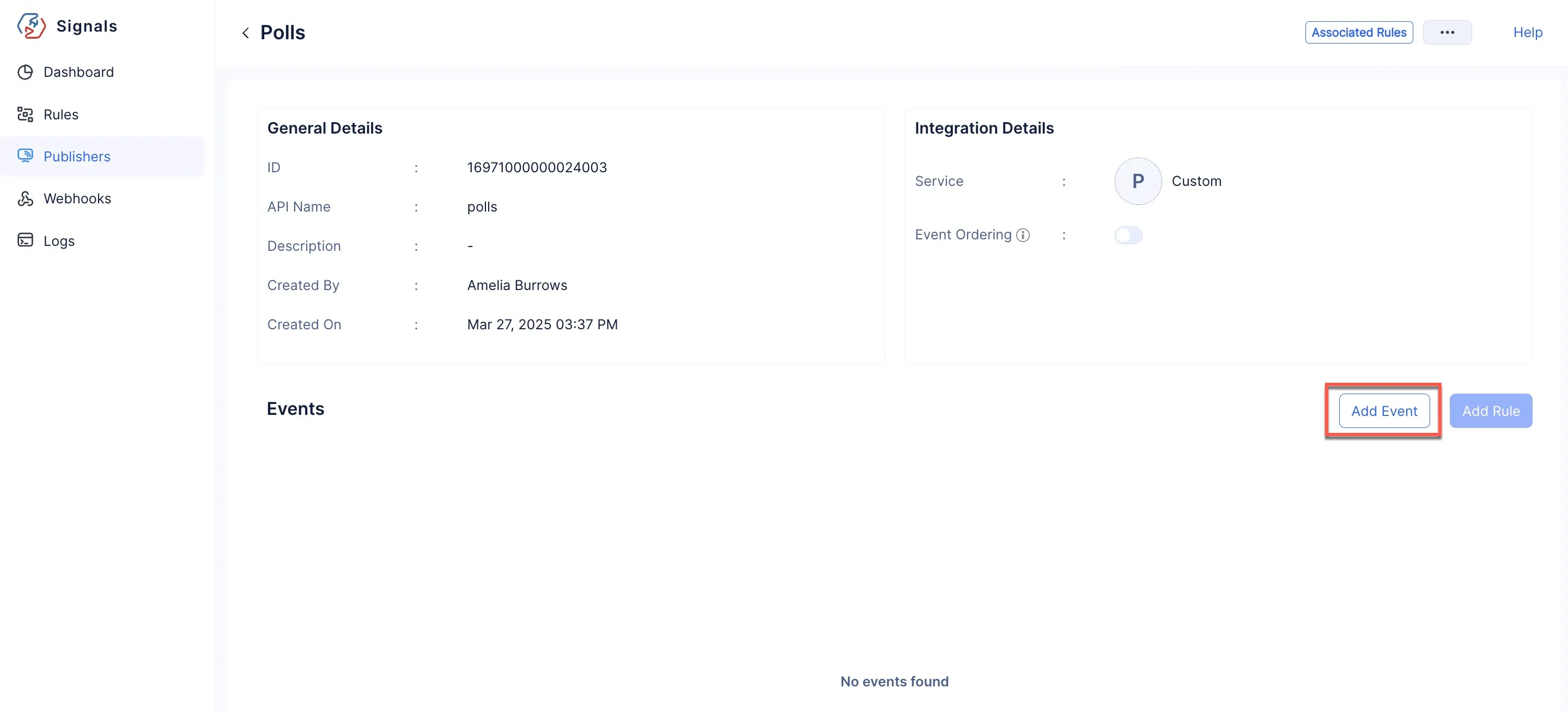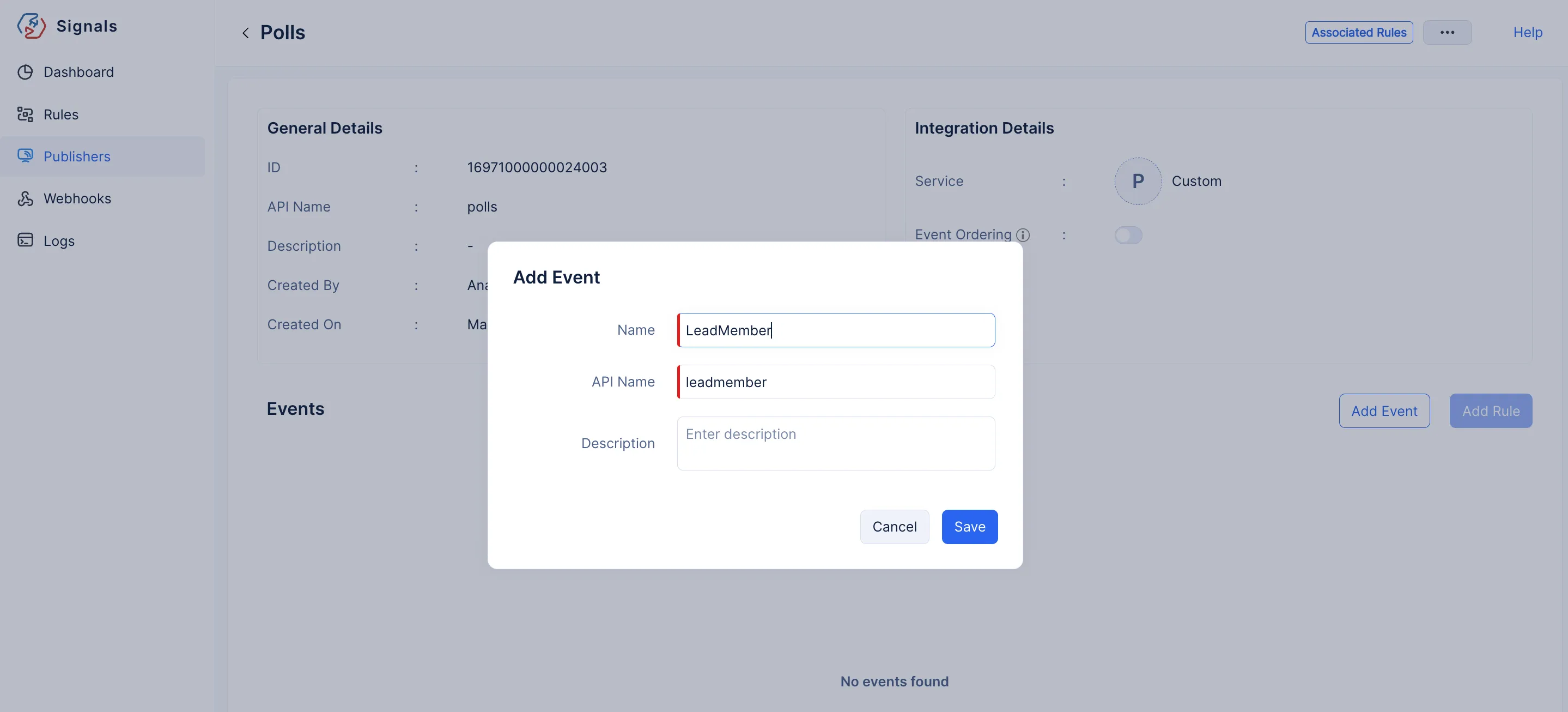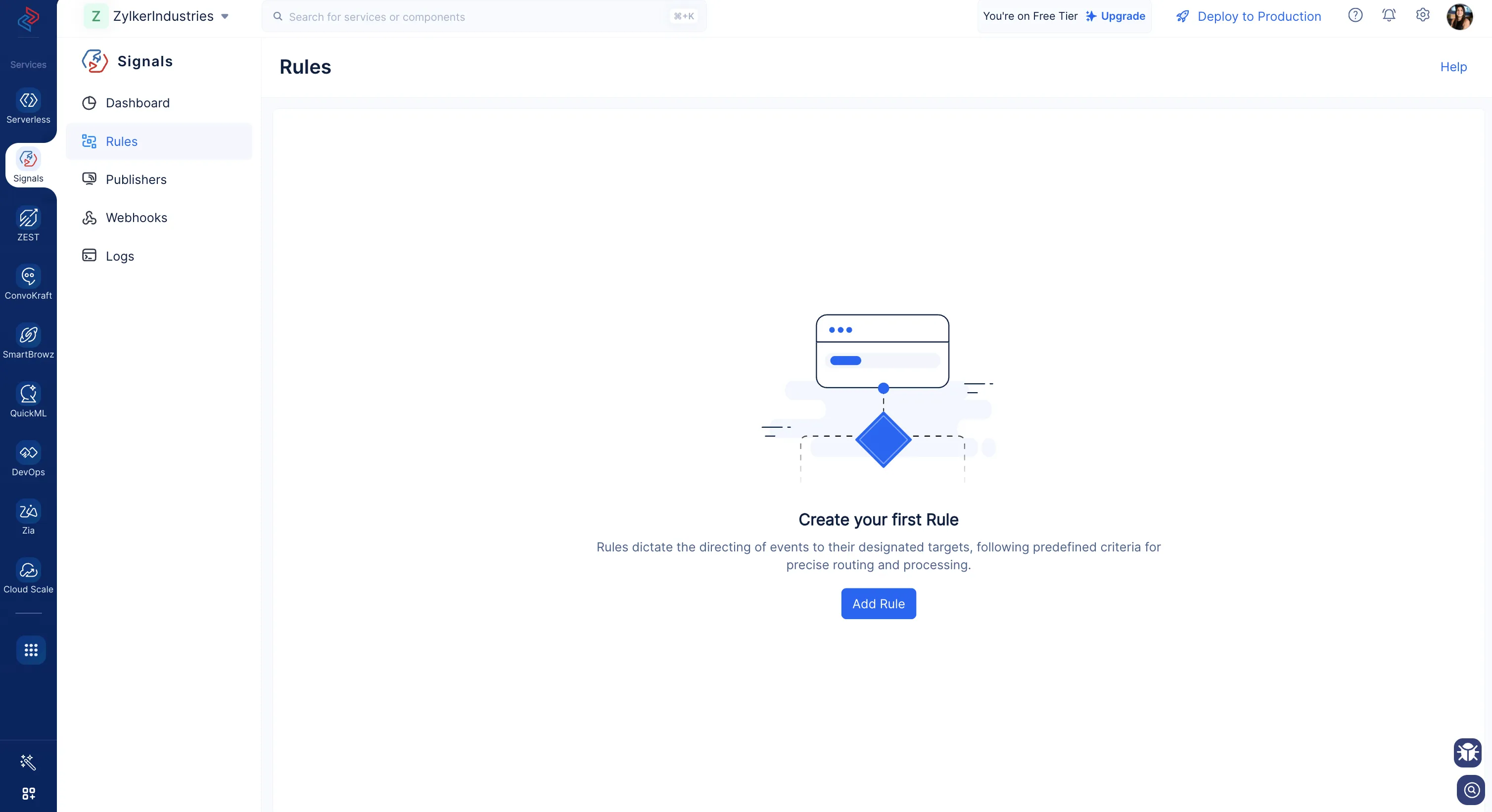Employ Connections in Signals
Signals is Catalyst’s robust event bus service where you can implement event-driven architecture to streamline your operations effectively and considerably increase its efficiency.
In Signals, you can produce an event-driven architecture, where the action that occurs in one service can trigger a resulting action in another service, provided the integration between these services is authenticated.
For this type of integration use cases, you can leverage the Connections component to handle the authentication requirement seamlessly. Connections will ensure that the data sharing between the two services occurs in a smooth and secure manner.
Consider the following example:
An ecommerce platform would like to gain better insights on the sales of their products. One of the possible solutions to this use case can be achieved using two services: Zoho CRM and Zoho Analytics.
You can use Zoho CRM to handle every data associated with the sale, and then you can automate funneling of data to Zoho Analytics by coding a suitable business logic and configuring an event-driven architecture using Catalyst Signals.
A crucial step in engineering this solution would be authenticating the integration between Zoho CRM and Zoho Analytics to allow data flow from CRM to Analytics.
Employing Connections here would streamline the entire integration and save you time and effort you would spend in coding and handling the required tokens to keep the integration stable, secure, and active.
Now, with Connections authenticating the integration, Zoho Analytics will be able to analyze the CRM data, and leveraging the results of the analysis, the ecommerce platform owner can drive meaningful improvements to enhance their sales.
Implementation
Consider the following example illustrating the steps required to employ Connections to authenticate the integration between a web application (Service 1) and Zoho CRM (Service 2). We will be using Signals to automate funneling relevant data from the web application to Zoho CRM.
Configuring a Publisher
A Publisher is a component in Catalyst Signals that you can use to configure a service that will act as the primary source of events. To configure the web application as a Publisher:
- Navigate to the Catalyst Signals service in the console, and click the Publisher component. Click Add Publisher.

- Click the Create Your Own Publisher tab, and provide the required details for your Publisher and click Save.

The web application has been configured as a Publisher.
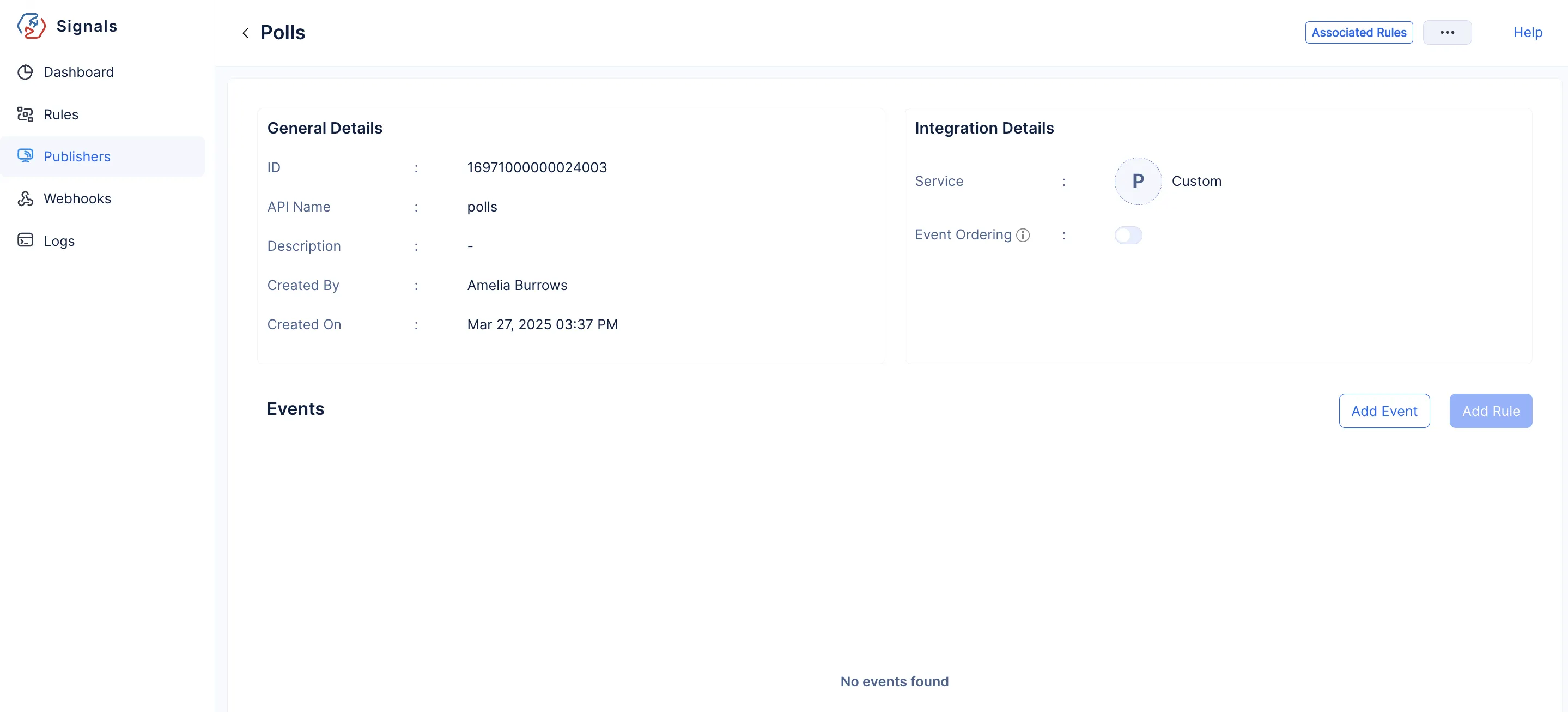
Create an Event for the Publisher
An Event in Catalyst is essentially a trigger action that occursa trigger action that occurs due to an interaction in the Publisher’s environment.
To create an event:
The required event has been created.

You will be able to trigger the event using the API link generated by Catalyst. You can access this link by clicking the REST API button.

Configure the Webhook
A Webhook in Catalyst Signals allows you to automatically initiate the required functions in the target environment due to interactions that occur in the Publisher environment.
For this example, the required module in the Zoho CRM service will act as the webhook, and the integration between the services will be authenticated using Connections.
To configure the Webhook:
-
Navigate to the Webhooks component present in the Catalyst Signals section of the console and click Create Webhook.
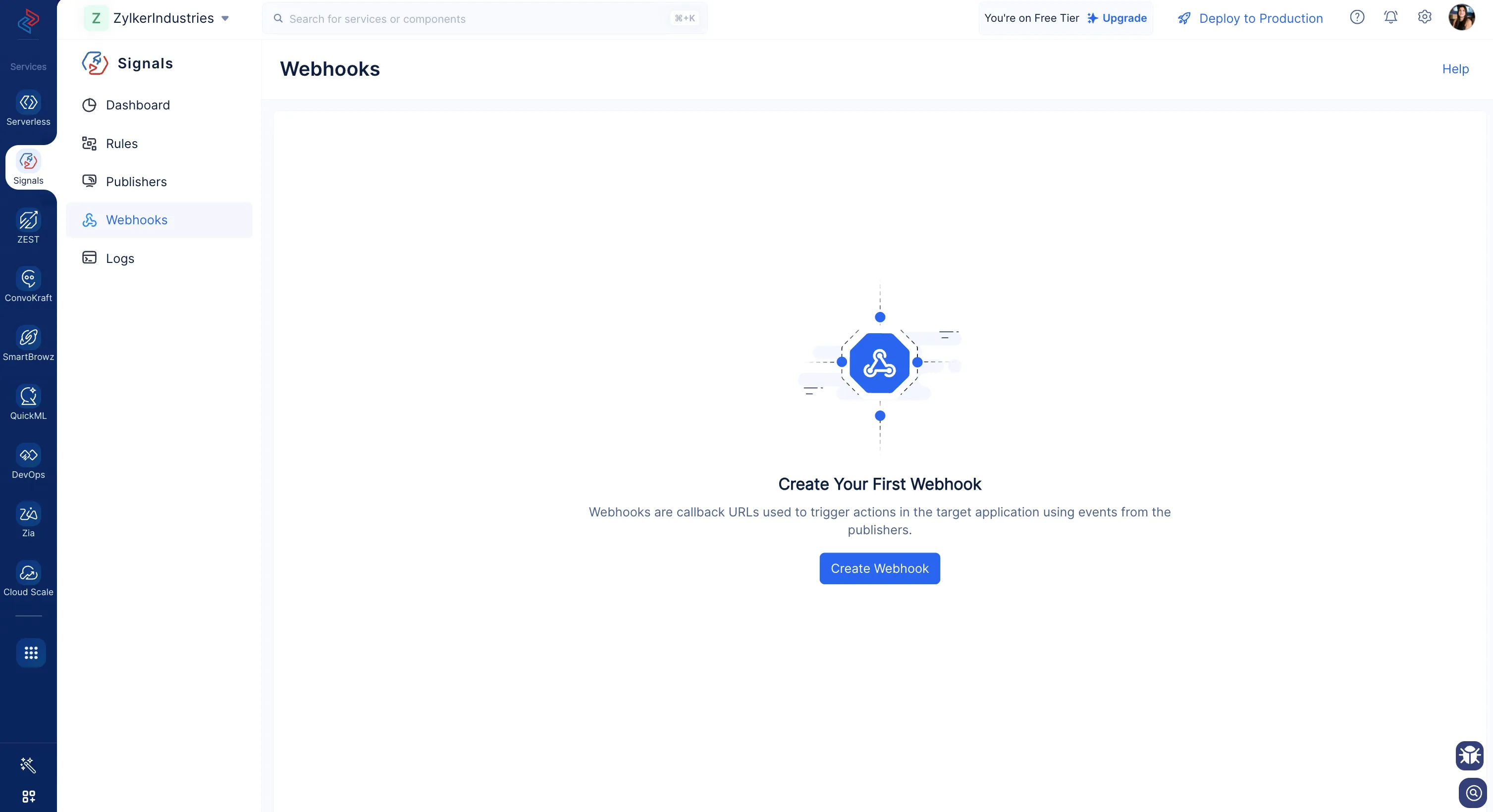
-
Provide a suitable name for your webhook and enter the Endpoint URL with the required request method.
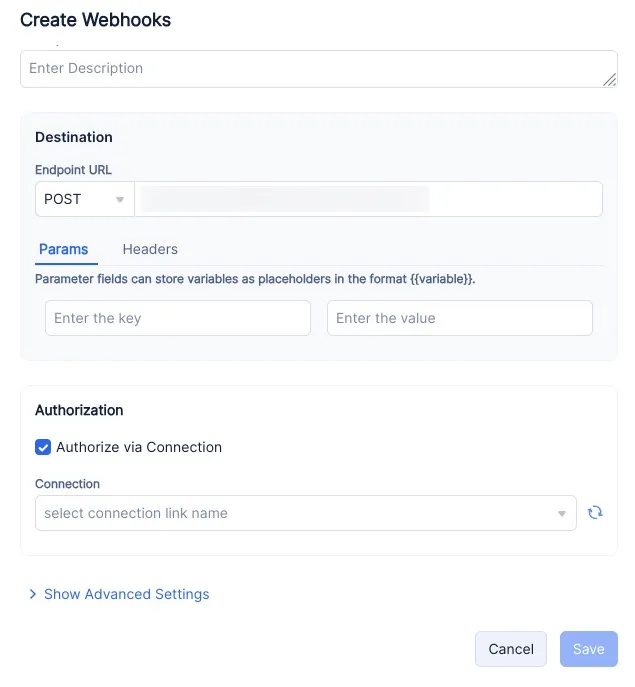
-
Enable the Authorize via Connection checkbox and select the Connection you configured for Zoho CRM from the drop-down.

- Click Save to create the Webhook.
Create a Rule
Next, create a rule and define it in a manner where when the required event takes place in the Publisher, the Event gets triggered, performs the configured action in the Target defined using the Webhook and authorized using Connections.
To create a Rule:
The rule will be created.
Now, each time the configured event (sign up action) occurs in the web app, a record will be added to a module in Zoho CRM. This entire process will be automated since we leveraged event-driven architecture using Catalyst Signals, and the required integration will be authorized automatically and securely using Connections.
Last Updated 2025-05-26 17:57:12 +0530 IST
Yes
No
Send your feedback to us


